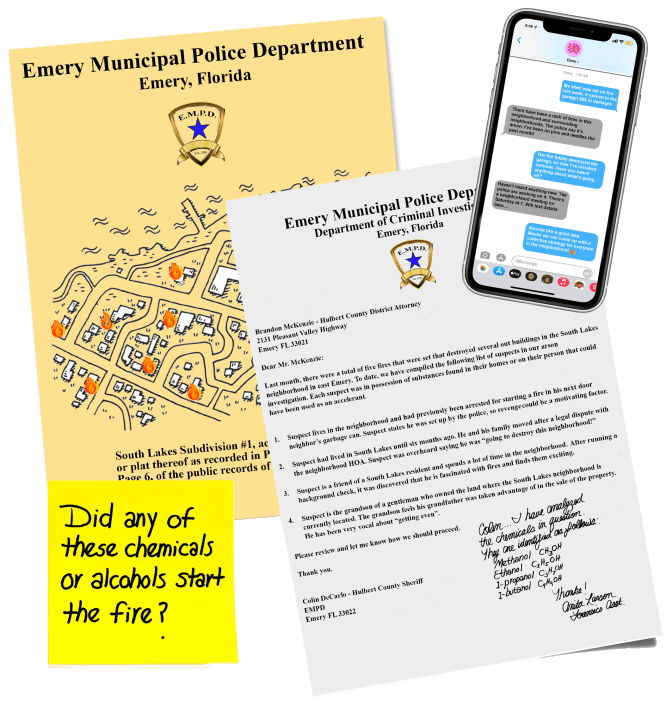
Introduction
Accelerants are fuels used to spread fires and are commonly used in arson crimes. When crime scene techs find these in unlabeled containers, it falls on the lab technician to identify the nature of the accelerant.
A test that can be used to distinguish between these volatile substances is to compare the change in temperature of a surface as the substance evaporates from it. As substances evaporate, or change from liquid to gas, energy is required. As energy is delivered to the molecules to increase their kinetic energy, the energy of the surface from which they evaporate will decrease, resulting in a drop in temperature of the surface. This type of energy change is called endothermic.
The change in temperature as the substance evaporates is related to the intermolecular forces acting between the molecules of the substance. Depending on the nature and structure of the molecules, the forces acting between them will vary. Two intermolecular forces—hydrogen bonding and London dispersion forces—are of particular importance.
Hydrogen bonding is an attractive force between molecules of a compound that have hydrogen atoms bonded to oxygen, nitrogen or fluorine. This can be a rather strong attraction between the molecules of the compound or to other compounds with similar structure.
London dispersion forces are always present between the molecules of compounds. The electrons from one molecule will repel those of another. This causes each molecule to become slightly polar; one side of the molecule has fewer electrons in the space around the molecule while the other side has more. As a result, the side with fewer electrons will be attracted to the side of a different molecule with more electrons. This is usually a pretty weak attraction compared to other intermolecular forces.
In this experiment, you will evaporate a sample recovered from the crime scene while monitoring the change in temperature. Then you will evaporate the samples of accelerants taken from the homes of arson suspects in the case. By comparing the graphs of temperature vs. time for all the substances collected while they are evaporating, you should be able to distinguish between them.
Objectives
- Identify the likely accelerant used in an arson.
- Justify your solution, based on evaporation rate.
- Understand that evaporation rate is a characteristic property of a liquid related to intermolecular forces
Sensors and Equipment
This experiment features the following sensors and equipment. Additional equipment may be required.
Correlations
Teaching to an educational standard? This experiment supports the standards below.
- International Baccalaureate (IB) 2025/Chemistry
- Structure 2.2.8—The nature of the force that exists between molecules is determined by the size and polarity of the molecules. Intermolecular forces include London (dispersion), dipole-induced dipole, dipole–dipole and hydrogen bonding.
- Structure 2.2.9—Given comparable molar mass, the relative strengths of intermolecular forces are generally: London (dispersion) forces < dipole–dipole forces < hydrogen bonding.
Ready to Experiment?
Ask an Expert
Get answers to your questions about how to teach this experiment with our support team.
- Call toll-free: 888-837-6437
- Chat with Us
- Email support@vernier.com
Purchase the Lab Book
This experiment is #1 of Forensic Chemistry Experiments. The experiment in the book includes student instructions as well as instructor information for set up, helpful hints, and sample graphs and data.



